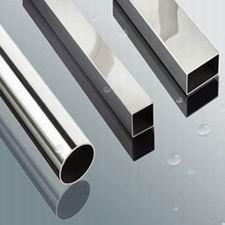- EN 441 stainless steel flat bar Hot rolled / cold drawn
- STS304L stainless steel round bar
- Stainless Steel Hot Rolled Flat Bar
- ISO Stainless Steel Angle Bar
- straight cut stainless steel wire sus304
- 304 bright soft annealed stainless steel wire
- 304L bright soft annealed stainless steel wire
- Stainless Steel Wire
- AISI316 stainless steel round pipe/tube
- 300 Series grade stainless steel round pipe
- AISI/SUS stainless steel pipe/tube cold drawn
- ASTM A249 stainless steel round pipe

Galvanized Steel: How It's Made and Why It Matters
Inquiries : 0 - 2025/10/22 13:28:33
From construction sites and car manufacturing to home appliances and the railings on our balconies, galvanized steel is everywhere. Known for its distinctive silvery pattern and excellent rust resistance, have you ever wondered what gives ordinary steel this "protective shield"? Let’s take a closer look at the process behind galvanized steel and the vital role it plays.

What Is Galvanizing and What Does It Do?
Galvanizing refers to the process of coating steel with a layer of zinc. It’s not just about appearance―it’s a highly effective and economical form of dual protection: both a physical barrier and a chemical defense.
Its main roles can be summarized as follows:
Barrier Protection (Physical Layer):
The zinc coating tightly covers the steel surface, acting like a raincoat that shields the base metal from moisture and oxygen in the air, preventing oxidation (rust).
Sacrificial Anode Protection (Electrochemical Defense):
This is the most ingenious aspect of galvanizing. In the reactivity series of metals, zinc is more reactive than iron. If the zinc coating gets scratched and the steel is exposed, the zinc will “sacrifice itself” by corroding first, thereby protecting the underlying iron. This continues until the surrounding zinc is fully consumed.
In simple terms, even if the coating is damaged, the zinc will protect the steel until it gradually wears away.
How Is Steel Galvanized? Two Main Methods
Galvanizing is mainly divided into two types: hot-dip galvanizing and electrogalvanizing. They work on different principles and result in products with different characteristics and uses.
Hot-Dip Galvanizing
This is the most common method, offering the thickest zinc layer and the strongest corrosion resistance.
Process Overview:
Pretreatment: Steel is cleaned―degreased, pickled to remove rust, and fluxed.
Hot-Dipping: The steel is immersed in a bath of molten zinc at around 450°C.
Reaction & Cooling: A metallurgical reaction occurs, forming a robust zinc-iron alloy layer. Once cooled, a multi-layer zinc coating is formed.
Key Features:
Thick coating, extremely long-lasting―can protect for decades.
Visible zinc crystallization pattern (“spangle”) on the surface.
Ideal for outdoor and heavy-duty applications: transmission towers, highway guardrails, structural frames, roofing, etc.
Electrogalvanizing (Cold Galvanizing)
This method uses an electric current in an electrolyte solution to deposit a thin layer of zinc onto the steel surface.
Process Overview:
Pretreatment: Cleaning and surface preparation.
Electroplating: The steel acts as a cathode in a zinc-ion solution; direct current is applied.
Deposition & Post-treatment: Zinc ions bond to the surface, often followed by passivation (e.g., colored, blue, or black coatings) for extra protection and appearance.
Key Features:
Thin, smooth, uniform coating.
Good corrosion resistance for indoor use.
Excellent for painting or further processing like bending.
Common in automotive parts, appliance housings, hardware, and fasteners.
Where Is Galvanized Steel Used?
Thanks to its corrosion resistance, reasonable cost, and good strength, galvanized steel is a foundational material in:
Construction & Infrastructure: structural frames, bridges, roofing
Automotive Industry: body panels, chassis components
Home Appliances: outer and inner parts of refrigerators, washing machines, etc.
Everyday Metal Products: fencing, scaffolding, cable trays, screws, and bolts In a Nutshell
Whether through the heat-intensive hot-dip method or the electroplating approach, the goal of galvanizing is the same: to provide long-lasting corrosion protection by leveraging zinc’s “self-sacrificing” properties. Understanding the difference between the two methods helps in making the right choice―hot-dip for heavy outdoor structures, and electrogalvanizing for indoor parts where appearance and formability matter.

